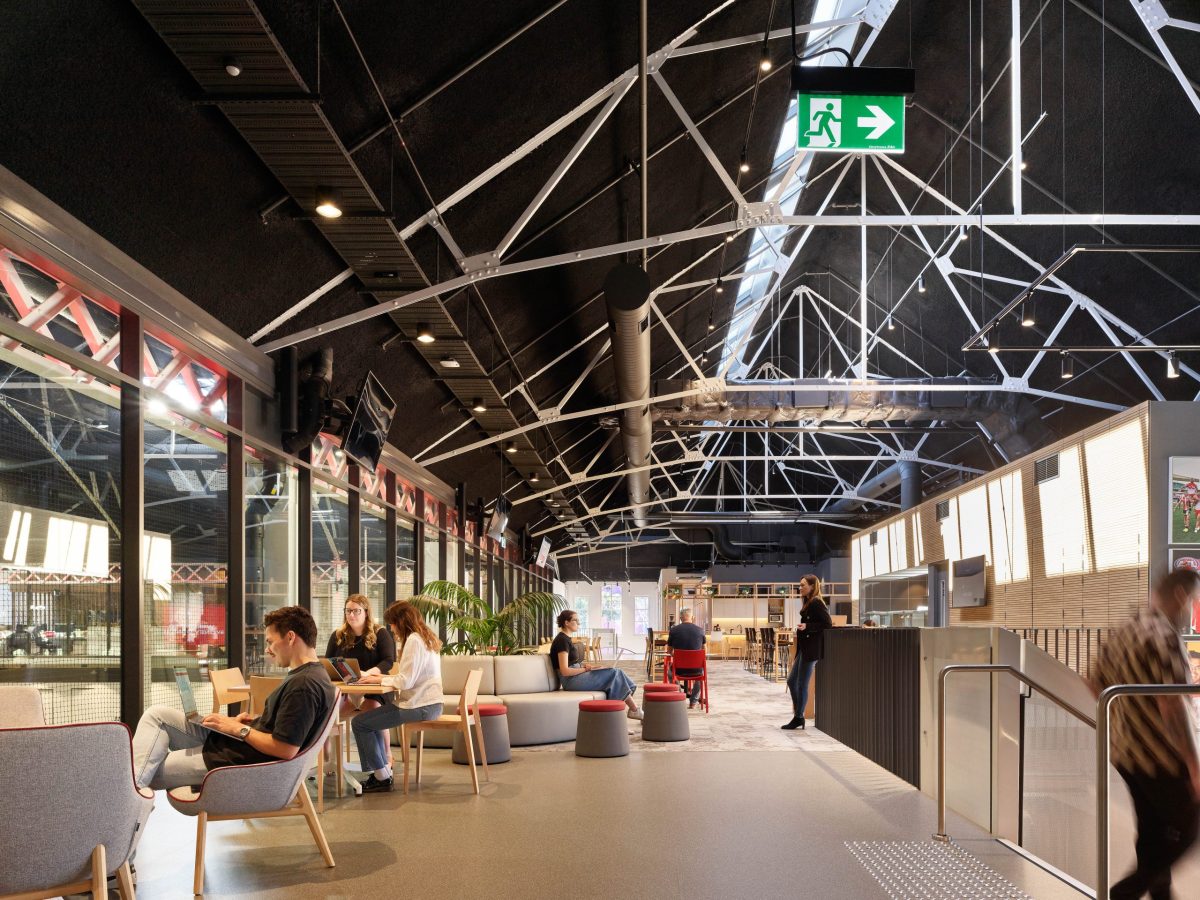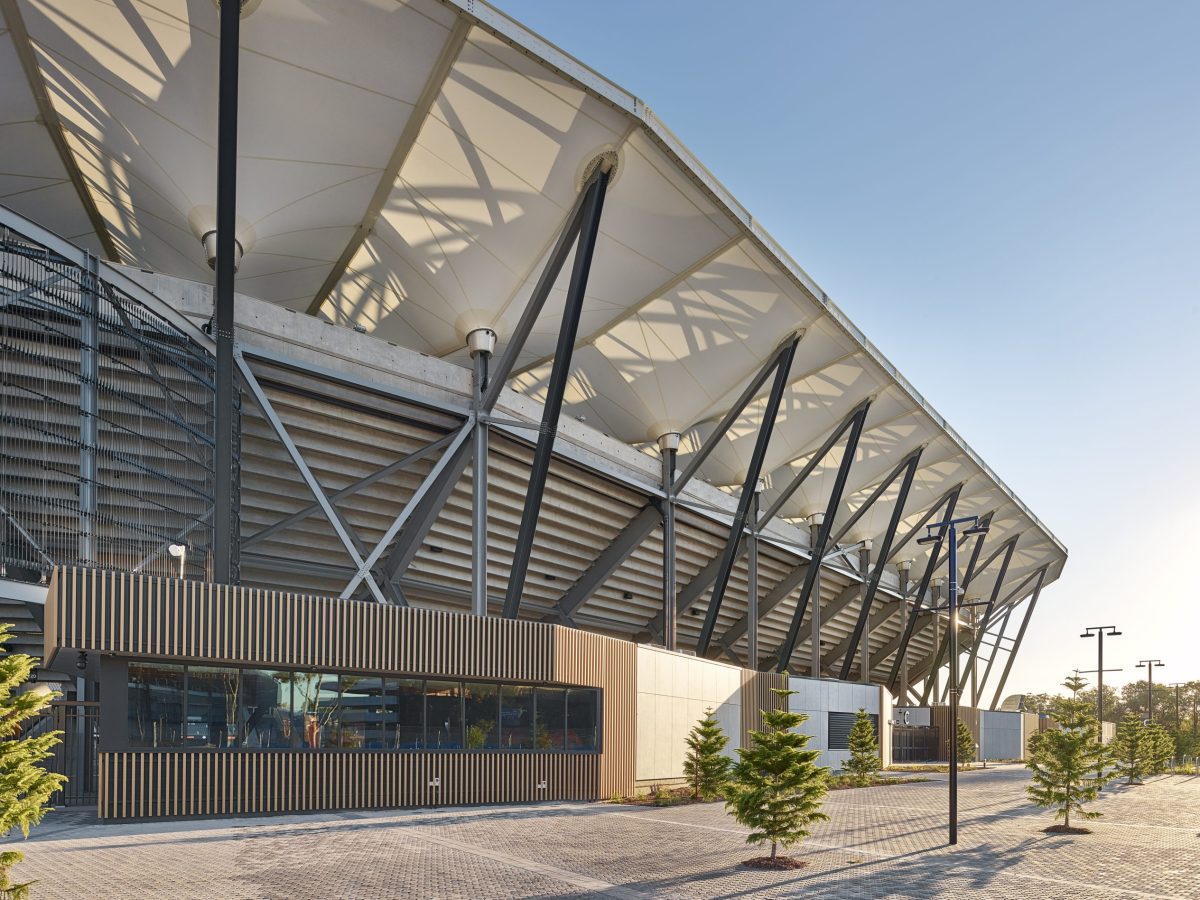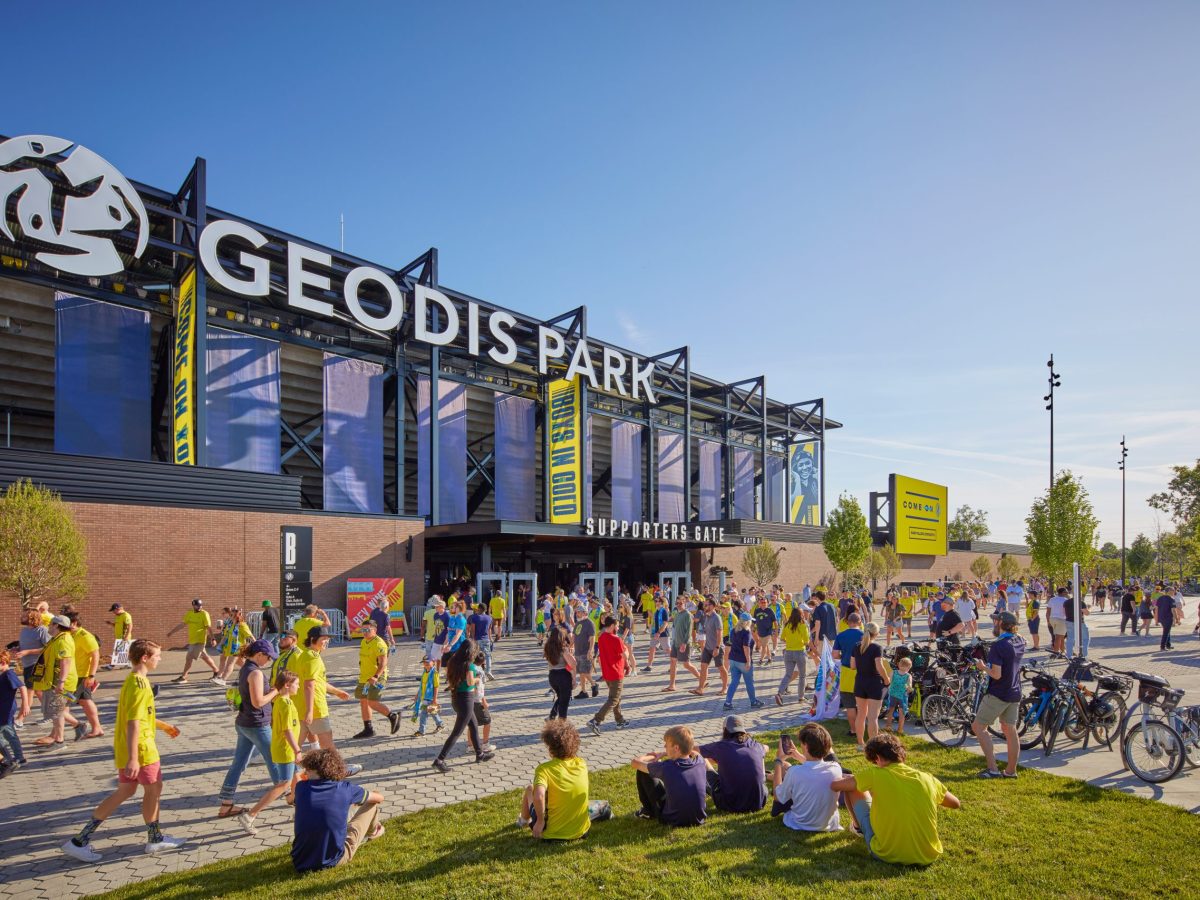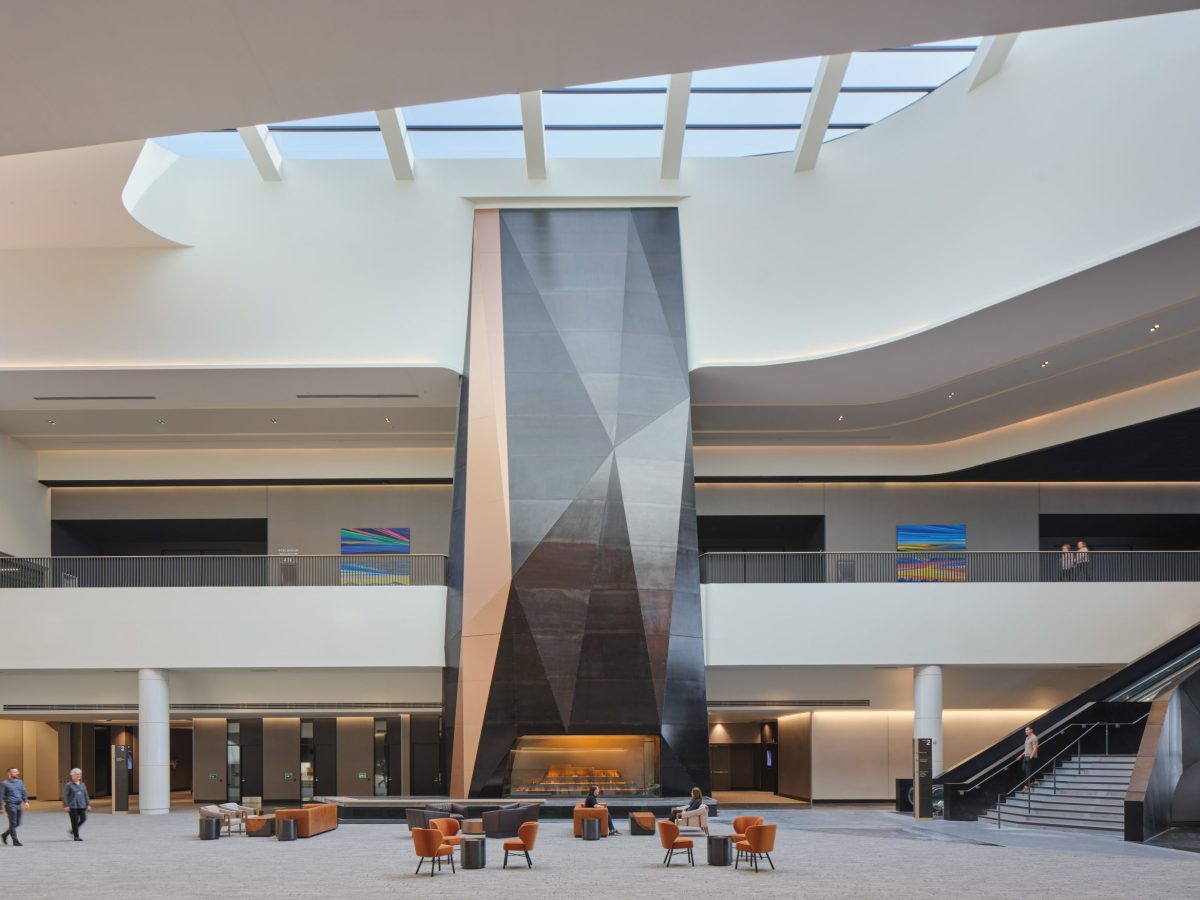April 29, 2025
The Big 5 in 2025: Sustainable Design Ideas Reshaping Venues

Sustainability is no longer a nice-to-have; it’s a strategic commercial imperative. From attracting investment, securing the best acts, delivering the best fan experience to future-proofing operations, the expectations around environmental and social responsibility are redefining how venues are designed, operated and marketed.
Here, we share our top five sustainable design themes that have owners, operators and users rethinking everything from design blueprints to community impact.
01. Green Design is Good Design
With 77% of global investors prioritizing sustainability [1] and 65% of sports leaders factoring ESG into investment decisions [2], venues with green credentials are increasingly viewed as smart investments.
The strategic edge lies in designing venues that understand the current place and its climate as well as its legacy with respect to climate issues. Therefore, the key to good design is climate-responsive design principles that maximize sunlight, ventilation and temperature to minimise reliance on mechanical systems. Further, third-party green standards like Green Star, LEED, WELL, ILFI, or NABERS can validate these principles that are built into the design. Although upfront costs for energy-efficient technology, sustainable materials, and renewable systems can be high, they can be offset by long-term operational savings. The result is lower lifecycle costs and stronger investor confidence.
Key takeaways:
→ Verified sustainable design is becoming synonymous with good design
→ High initial investment, but greater financial returns over time
→ ESG-focused funding is driving venue design choices
02. Smart Buildings Operate Sustainably
Sustainability doesn’t end at the blueprint; it’s integrated into day-to-day operations. With over 53% of global sports leaders highlighting carbon reduction as a top priority [3], operational sustainability is under the microscope.
Venues are leveraging technology: think smart lighting, AI-powered energy systems and waste reduction programs that reduce a venue’s carbon footprint. And the mandates for smart sustainable design aren’t just coming from government; major sporting bodies like FIFA and the International Olympic Committee, as well as global acts like Coldplay and Billie Eilish are setting expectations for venues to be operating sustainably.
Key takeaways:
→ Operational performance is key to ongoing sustainability
→ Eco-conscious artists and sports bodies drive change
→ Efficiency gains double as cost savings and brand boosters
03. Community is the Heart of Venues
Nearly half of sports leaders say the long-term use and relevance of venues is central to sustainability [4]. Avoiding the ‘white elephant’ effect means embedding venues within the communities they operate by increasing the event calendar through community events and therefore, reducing the embodied carbon rate per use [5].
That could include local material sourcing, green job training, community gardens, enhanced public spaces and energy-sharing with local grids. Beyond functionality, venues are becoming symbols of local pride, resilience and shared responsibility.
Key takeaways:
→ Community engagement elevates venue relevance and value
→ Social sustainability is as important as environmentally conscious design
→ Multifunctional design builds long-term attachment and trust
04. Future-ready means Climate Resilient
As major climate events intensify, public assembly venues are being pushed to serve dual purposes: world-class sports and entertainment hubs and centres of community resilience where people come together to find shelter, safety, and enjoyment.
As sustainability standard setters, sustainable venues are incorporating cool zones [6], renewable energy systems, flood defences and emergency infrastructure to both meet regulatory demands and ensure community resilience. It’s about future-proofing through flexibility.
Key takeaways:
→ Resilient design mitigates legal and financial risks
→ Multi-use venues offer value beyond ticket sales
→ Climate-smart planning builds long-term operational security
05. Sustainability = Innovation + Influence
In an era where eco-credentials can make or break a brand, venues that innovate sustainably are winning the attention of eco-conscious artists, sports leagues and fans.
From zero-waste systems to net-zero ambitions, leading venues are not just meeting expectations – they’re setting them. Technology adoption and innovation in material selection, reuse and operations are fast becoming points of differentiation in a competitive landscape.
Key takeaways:
→ Sustainability is a key brand differentiator
→ Innovation drives both environmental and experiential excellence
→ Forward-thinking venues attract high-profile clients and loyal audiences
The Bottom Line
Sustainable design is no longer about meeting government targets – it’s a strategic commercial driver. From unlocking new investments to shaping brand perception and community value, efficient and contextual design practices in 2025 are central to how venues thrive in a changing world.
The venues we are designing now for the future must be smart, green, resilient, ecologically responsive and be deeply embedded within their communities.
References
[1] Norton, L. P. (2024, January 31). Over 50% of Investors Plan To Boost Sustainable Investments in 2024. Morningstar, Inc. https://www.morningstar.com/sustainable-investing/more-than-50-individuals-say-theyll-boost-sustainable-investments-this-year
[2] PwC. (2024). Sports Industry: On track for Growth? PwC’s Global Sports Survey (8th edition). https://www.pwc.co.uk/hospitality-leisure/documents/global-sports-survey-2024.pd
[3] PwC. (2023). Bouncing Back: PwC’s Global Sports Survey (7th edition). https://www.pwc.com.au/industry/sports/global-sports-survey-seventh-edition.pdf
[4] PwC. (2023). Bouncing Back: PwC’s Global Sports Survey (7th edition). https://www.pwc.com.au/industry/sports/global-sports-survey-seventh-edition.pdf
[5] World Green Building Council. (2021, September 3). Embodied Carbon. World Green Building Council. https://worldgbc.org/climate-action/embodied-carbon/
[6] County of San Diego. (n.d.). Cool Zones. County of San Diego. Retrieved May 6, 2025, from https://www.sandiegocounty.gov/content/sdc/hhsa/programs/ais/cool_zones.html
Lorem ipsum dolor sit amet consectetur, adipisicing elit. Non facere corporis et expedita sit nam amet aut necessitatibus at dolore enim quis impedit eius libero, harum tempore laboriosam dolor cumque.
Lorem, ipsum dolor sit amet consectetur adipisicing elit. Illo temporibus vero veritatis eveniet, placeat dolorem sunt at provident tenetur omnis, dicta exercitationem. Expedita quod aspernatur molestias eum? Totam, incidunt quos.






